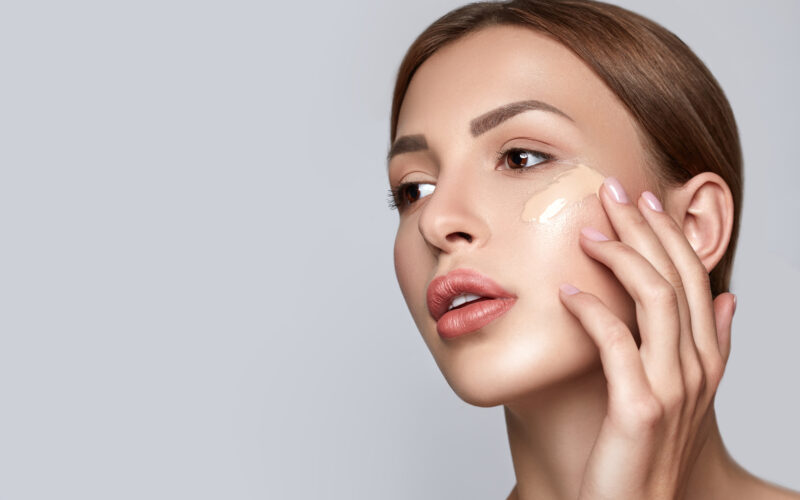When you’re rushing to get out of the house, a quick swipe of lipstick or mascara is probably all the makeup you have time for. But for a special occasion — or whenever you want to look your best — foundation is the secret to a polished appearance that still looks soft and natural.
No one wants a look that seems fake and heavy, so it’s essential to choose the right formula and shade. If applied with a light touch, a foundation can subtly hide redness and even out your skin tone naturally.
To achieve pretty, glowing skin that looks like it’s your own, not a mask, try these simple tips from Ildiko, a well-known makeup artist in New York City.
1. Choose the right formula for your skin type.
First, look for a foundation that provides sheer, light or medium coverage. (Check the label for those terms.) These give enough coverage to blend away blotchiness and make skin look brighter, but not so much so the makeup won’t blend into skin.
The best formula for you depends on your skin type:
- Dry or normal skin: Choose a liquid or cream formula whose label indicates it’s moisturizing or anti-aging. These types typically contain extra hydrating ingredients, such as glycerin, niacinamide or vitamin E to keep skin soft and smooth.
- Oily skin: Unlike dry skin, your complexion has too much moisture. Avoid extra in your makeup by choosing a liquid foundation that is oil-free and mattifying. Or pick a mineral powder foundation. Both absorb excess oil, keeping your skin shine-free and your makeup in place.
- Sensitive, blotchy skin: If skin needs a little extra coverage to hide redness or other pigmentation, opt for foundation that comes in a stick. A concealer-foundation hybrid, this formula delivers extra pigment.
2. Find the right shade.
Most makeup lines offer more colors of foundation than your local pizza place has toppings. To find your perfect match, pick out two or three and compare them on or against your skin.
“You can’t rely on the back of your hand since it’s rarely the same shade as your face,” says Ildiko. Instead, use your jaw and neck area. If you’re shopping at a department store or beauty chain, test each directly on your skin. “At the drugstore, hold each of the bottles up to your face and neck,” says Ildiko. Then buy the closest match.
Regardless of where you shop, save the receipt until you’ve worn the makeup and are happy with the results. The majority of stores — including drugstores and online retailers — allow an exchange or refund if you decide the shade isn’t right, even if the package has been opened.
3. Apply for natural results.
Although most foundation rookies run into trouble when it comes to shade or formula, how you apply the makeup can mean the difference between looking good and looking so good your friends and spouse shower you with compliments. Follow these easy steps:
- Start with fresh skin. Always wash and moisturize your skin first. Give your moisturizer about a minute to absorb before applying foundation.
- Use only where needed. With liquid or stick foundation, place a few dots where you see discoloration. If you use powder, concentrate only on the parts where skin seems uneven. The most common spots are cheeks, around your nose and on your chin. “If any area doesn’t need coverage, such as your forehead, skip it,” says Ildiko. “Targeted spot application looks the most natural.” Then, blend it outward toward your hairline and jaw.
- Blend liquid and stick foundation. You can use your fingers, but a damp sponge dilutes the makeup slightly, giving you sheerer, lighter coverage.
- Use a Kabuki brush for powder formulas. Kabuki brushes are soft and fluffy, similar in shape to a men’s shaving cream brush. To use it, dip the tips of bristles into the powder, then tap them against the jar’s edge to shake off excess. Next, press the bristle tips flat against skin and blend in the foundation using a circular motion.
- Add more if necessary. Always apply less makeup than you think you need and build up to the coverage that looks best. It’s easy to apply more; removing excess is time-consuming and frustrating.
4. Set your makeup.
Lightly dust on translucent powder to help the foundation stay in place. However, skip this step if you have very dry skin or use a powder foundation: Your makeup is less likely to shift or wear off, so you don’t need powder.







